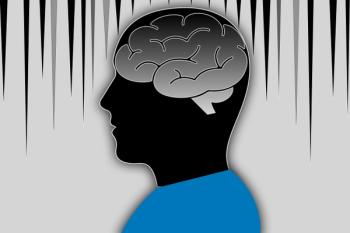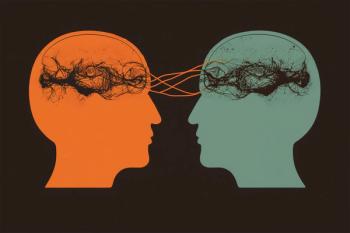
- Vol 42, Issue 11
Mentalization-Based Treatment: A Promising Approach for Pathological Narcissism
Key Takeaways
- Mentalization-based treatment (MBT) is being adapted for narcissistic personality disorder (NPD), focusing on enhancing patients' mentalization abilities to address core emotional and interpersonal challenges.
- MBT targets the mentalizing deficits in NPD, such as empathic deficits, alexithymia, and overestimation of mentalizing abilities, which contribute to the disorder's functional challenges.
Mentalization-based treatment offers innovative strategies to effectively address the challenges of narcissistic personality disorder and enhance emotional understanding.
Approximately 1% of individuals meet criteria for narcissistic personality disorder (NPD), and 6.2% of people meet criteria at some point in their lifetime.1,2 Despite this high prevalence, clinicians may feel hesitant to diagnose NPD, and anxious about how to effectively treat these patients. With no randomized controlled trials on psychotherapy for NPD, providers often experience hopelessness and frustration when treating patients with narcissistic challenges.3,4 How can clinicians help these patients, especially when they can come across as so rigid, self-centered, walled off, and antagonistic?
Mentalization—the ability to accurately “read,” access, and reflect on mental states in oneself and others5—offers a promising answer. As a leading evidence-based therapy for individuals with
Mentalization and Pathological Narcissism
MBT proposes that children develop the ability to mentalize through empathic, attuned interactions with their caregivers.8 This process gets disrupted in pathological narcissism. Although there are multiple pathways for the development of narcissism,10 research suggests that narcissism is associated with parental overvaluation, in which parents relate to their children as if they are more entitled and special than other children.12 Rather than mirroring the child’s emotional states, the caregiver presents an idealized image of the child, one that prioritizes strength, achievement, confidence, and positivity. The child thus internalizes what MBT refers to as the narcissistic alien self—a sense of self organized around who the parent feels the child “should” be, which fails to reflect a complex array of the child’s actual feelings (eg, insecurity, sadness, anxiety, desires for care).10,11
As development unfolds, the person remains disconnected from their emotions, instead feeling a compulsive need to self-enhance by pursuing the external conditions for their self-esteem: achievement, attractiveness, intelligence, sex, and others’ positive views of them (
Extensive research supports this theory, confirming that people with narcissism exhibit notable challenges with mentalization: empathic deficits14; alexithymia, or difficulties identifying and expressing their emotions15; overestimation of their mentalizing abilities16; and decreased generosity, which is mediated by reduced perspective-taking abilities.17 Deprived of these “mentalizing buffers,” people with narcissism fall into nonmentalizing modes, or the forms of non-reflectiveness that characterize personality pathology (
How to Help: Stimulate Mentalizing
If problems in mentalizing drive the functional challenges of pathological narcissism, then that suggests a straightforward “target” in the care of these patients: helping them to mentalize. Preliminary evidence supports this approach. In an 18-month outpatient trial, MBT was more effective than generalist treatment for patients with greater Axis II comorbidity, including comorbid NPD and BPD. Approximately 75% of patients
(25 of 34) in MBT showed full recovery at the end of treatment, compared with 25% (6 of 23) in generalist treatment. Patients in MBT also demonstrated significantly more rapid improvements in self-harm, depression, social adjustment, and interpersonal functioning.18
In a recent study of 205 patients receiving an amalgam of psychodynamic/cognitive behavioral therapy, researchers confirmed the correlation between pathological narcissism and mentalizing deficits, also finding that the capacity to mentalize mediated the relationship between narcissism and treatment outcomes (eg, decreased
Formal MBT involves a series of initial steps, including discussing the NPD diagnosis, providing education about mentalizing, and collaboratively developing a written “MBT formulation” of patients’ unique mentalizing vulnerabilities.11 But for practitioners just getting started with these principles, MBT suggests that they simply adopt a mentalizing stance in their everyday clinical interactions
(
So the dictum is: Rather than making a statement, ask a question about what patients are going through. This requires a highly active clinical approach: directing attention to specific aspects of patients’ narratives, and asking open- and closed-ended questions about what they and others could be feeling.
Exploring the What, Why, and How
MBT for narcissism recommends a step-by-step trajectory of interventions, organized around the different types of mentalizing (
With this framework in mind, MBT recommends a handful of steps when confronting the therapeutic challenges that beset patients with narcissism (
For example, if a patient is hyperfocused on his anger toward his boss, encourage him to describe a recent interaction in detail (the “what”): “You mentioned that your boss was ‘disrespectful’ toward you. What did she actually say?”
Then work to “expand the what” by elaborating the patient’s emotions related to vulnerable aspects of the scenario: “When she said you had done a bad job on the assignment, how did that make you feel about yourself?”
If the patient describes feeling ashamed, mentalize the “why” by encouraging him to take a broader perspective on the emotional landscape: “You were so in touch with your anger toward her, but only vaguely aware of the shame. What do you make of this?”
Finally, mentalize the “how” by utilizing MBT’s strategies for addressing concrete thinking: “Could we look at this idea a little further—that your boss giving you constructive feedback means she does not respect you as a worker?”
MBT in Action
“Peter,” a 26-year-old second-year medical student, is referred for MBT following a suicide attempt made on the day he was scheduled to take step 1 of the United States Medical Licensing Examination. He was medically stabilized after a near-lethal overdose. He has since taken leave from school and moved back in with his parents, who fear he is retreating from life and at high risk of reattempting suicide.
In his first appointment with the MBT clinician, Peter presents in a state of apparent poise, delivering an intellectualized critique of the physician licensing process, while raising concerns about the clinician’s academic credentials. When the clinician asks about his suicide attempt, he launches into a vitriolic externalizing description of the “incompetent” professors whom he feels inadequately prepared him for the exam.
Noticing that his narrative is generalized, devaluing of others, and devoid of internal emotional experience, the clinician begins by prioritizing factual clarification over exploring feelings, asking him to describe “just the facts” about the events leading to the suicide attempt. The clinician gradually shapes this factual timeline into a mentalizing narrative by asking what emotions arose as he was preparing for the exam. When Peter reverts back to externalizing devaluation (“These are stupid questions”; “Those inept professors set me up to fail”), the clinician does not challenge these impressions. Instead, the clinician steadily redirects him to describe the “what” of his internal experience: “What did you feel, within yourself, when the professors were acting that way?”
Peter eventually names feeling “infuriated” by his professors’ incompetence. The clinician works to “expand the what” by probing for additional feelings. Peter acknowledges that he also felt anxious about failing the exam, and ashamed about how hard it was for him to study and learn the material. Now progressing to MBT’s “why” interventions, the clinician explores Peter’s “feelings about his feelings”: “What was it like for you to feel anxious and ashamed in that way?” Peter expresses longstanding discomfort associated with vulnerable feelings, noting that he feels “powerful” when angry and intolerably “humiliated” when afraid and ashamed.
As Peter builds this more nuanced picture of his internal world, the clinician notices his certainty that he would never pass the exam despite meticulous preparations, along with his concrete assumption that failing to become a physician means that he is worthless and has no reason to live. Utilizing MBT’s techniques for addressing problems in “how” patients are thinking, the clinician helps Peter explore how he arrives at these painful perspectives, as well as the negative consequences these views have had on his life and self-esteem. Over time, Peter begins to feel more curious about the clinician’s additional perspective that his difficulties might improve through the process of mentalizing—by identifying, reflecting upon, and authentically connecting with his own mental states, and the mental states of other people.
Concluding Thoughts
NPD can be formulated as a disorder of mentalizing, characterized by limited sensitivity to others’ affective states, challenges representing and accessing one’s own emotions and desires, and a fragmented mentalized self that requires continuous self-enhancement. This mentalizing formulation enables practitioners to target patients’ personalized mentalizing vulnerabilities related to narcissistic disruptions, as has already been done successfully in the treatment of BPD and ASPD.6,7 Further research is required to determine the effectiveness of this approach for pathological narcissism.
Mr Drozek is the clinical director of the Mentalization-Based Treatment (MBT) Clinic at McLean Hospital. He also serves as a staff psychotherapist in the Gunderson Outpatient Program and the Division of Alcohol, Drugs, and Addiction at McLean. He is a trainer and supervisor in MBT through the Anna Freud Centre in London, England, and a teaching associate in the Department of Psychiatry at Harvard Medical School. Dr Unruh is the medical director of the MBT Clinic and Gunderson Residence at McLean Hospital. He is a trainer and supervisor in MBT through the Anna Freud Centre, and an instructor in the Department of Psychiatry at Harvard Medical School. Dr Bateman is a consultant psychiatrist, psychotherapist, and MBT coordinator at the Anna Freud Centre. He is also a visiting professor at the University College of London, in England, and an honorary professor in psychotherapy at the University of Copenhagen, in Denmark. For more information about MBT, visit
References
1. Dhawan N, Kunik ME, Oldham J, Coverdale J.
2. Ronningstam E.
3. Finch EF, Mellen EJ.
4. Tanzilli A, Muzi L, Ronningstam E, Lingiardi V.
5. Drozek RP. Mentalization: Utilizing Reflection to Heal from Borderline Personality Disorder. Oxford University Press; 2025.
6. Fonagy P, Simes E, Yirmiya K, et al.
7. Storebø OJ, Stoffers-Winterling JM, Völlm BA, et al.
8. Bateman A, Fonagy P. Mentalization-Based Treatment for Personality Disorders: A Practical Guide. Oxford University Press; 2016.
9. Bateman A, Fonagy P, Campbell C, et al. Cambridge Guide to Mentalization-Based Treatment (MBT). Cambridge University Press; 2023.
10. Drozek RP, Unruh BT.
11. Drozek RP, Unruh BT, Bateman AW. Mentalization-Based Treatment for Pathological Narcissism: A Handbook. Oxford University Press; 2023.
12. Kılıçkaya S, Uçar N, Denizci Nazlıgül M.
13. Krizan Z, Herlache AD.
14. Urbonaviciute G, Hepper EG.
15. Chaim CH, Almeida TM, de Vries Albertin P, et al.
16. Duval J, Ensink K, Normandin L, Fonagy P.
17. Böckler A, Sharifi M, Kanske P, Dziobek I, Singer T.
18. Bateman A, Fonagy P.
19. Euler S, Hüwe L, Gablonski TC, et al.
20. Puder D. Psychiatry & Psychotherapy. Pathological narcissism: effective treatment with mentalization-based therapy (MBT). Interview with Robert P. Drozek, Brandon T. Unruh, and Anthony Bateman. November 15, 2024. Accessed October 4, 2025.
Articles in this issue
23 days ago
Interrelation of Hormones and Adult ADHD30 days ago
ADHD: Correcting Careless Mythsabout 1 month ago
Polypharmacy in Clozapine-Treated Patients: A Retrospective Analysisabout 1 month ago
Lamotrigine: An Update on Its Role in Bipolar Disorderabout 1 month ago
After Reading Music from Apartment 8about 1 month ago
Placebo Response Rates Vary Across Psychiatric DisordersNewsletter
Receive trusted psychiatric news, expert analysis, and clinical insights — subscribe today to support your practice and your patients.













